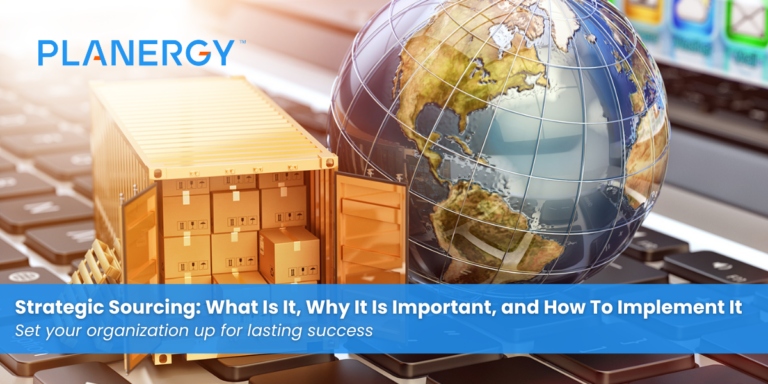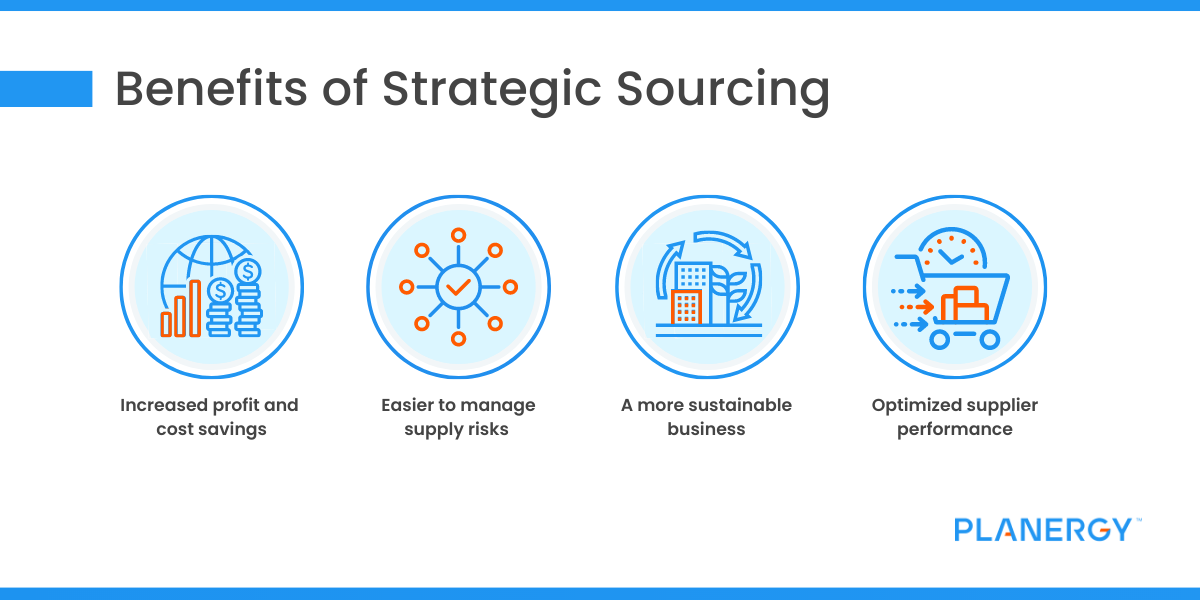The seven steps will show you how to begin the strategic sourcing process and reap the benefits it has to offer.
Categorize Company Spend
First, divide the entire supply chain into categories, each of which will have a manager assigned to monitor activity.
You’ll start with high-level categories like direct/indirect, materials/services, critical/non-critical, and domestic/import.
Then, divide everything into subgroups with a category code and description.
Maintain your spend categories in the ERP material master. If you haven’t created that yet, you should still have your spend separated into different cost accounts.
If you lack master data, speak with accounting to see if you can use their spend data as the starting point.
Make sure you involve your team throughout this process. Start at the highest level and work your way down. Involve design and engineering teams to get answers to more technical questions, the more details the better.
It’s important to create categories that work from the beginning because changing categories makes analyzing spend more difficult.
Analyze the Supplier Market
In this step, you find various suppliers and identify the ones you want to use. There are four parts to analyzing suppliers:
Market analysis: Determine the scope for your market—global, regional, by country, or local supplier. Collect data for the supplier base that could potentially supply each category.
Demand analysis: Examine your spend for each category and split it by supplier. Then, compare your spend to the supplier’s total revenue. When you see how much your spend is compared to supplier demand, you’ll know how valuable you can be to the supplier. This helps you gain leverage in future negotiations.
Supplier interviews: Send requests for information from potential suppliers and compare that to what you’re spending with current suppliers. This will help you determine if you want to stay with your current suppliers or if you can get better deals from other companies.
Category risk level analysis: Conduct a category risk assessment to determine whether working with this supplier is worth the risk or not. Evaluate each supplier based on availability, quality, finances, and cooperation level.
Create Your Sourcing Strategy
Creating a sourcing strategy involves examining how you do sourcing now and figuring out where you’d like to be.
It’s important to set benchmarks for suppliers and products, identify knowledge gaps, and create a list of opportunities.
Examine Your Current Sourcing Process
Talk with your stakeholders to learn why they are using certain products compared to cheaper alternatives. Evaluate potential suppliers against your current ones. Consider the hidden costs associated with changing suppliers.
Benchmark suppliers and products on the global level, even if you don’t intend to source from overseas, so you have the data from a global point of view.
Compare total supply chain costs to ensure you’re getting the best deal. Benchmark your existing chain with local and global alternatives, including delivery and transit times, batch order size, and stock levels.
Note anything that seems off, such as buying larger volumes from more expensive suppliers. Ask questions about any illogical data to help you find the gaps you need to look for opportunities.
Develop Your New Sourcing Strategy
There are two common strategies you can use as a base for your strategic procurement: Porter’s Five Forces and A.T. Kearney’s Purchasing Chessboard.
The five forces model looks at industry competition, the potential of new entrants, supplier power, consumer power, and the threat of substitute products to help determine the best way to work with a supplier.
The Purchasing Chessboard relies on four purchasing strategies and 16 levers to give you a total of 64 methods to use based on your needs. It’s a bit more complex but is good for high-level theoretical analysis.
Once you have an idea of what you need and who you want to work with, you can use these strategies or a combination of the two to negotiate the best possible deal with the vendor you choose in the next step.
Select Preferred Vendors
After evaluating the supplier market in step 2 and creating a sourcing strategy in step 3, you can start finding preferred vendors. Send each one you’re interested in working with an RFI or RFP with your benchmarks and requirements clearly defined.
Ask detailed questions to help you address management, sustainability, the product, processes, continuous improvement policies, and cost. Once you get the questionnaire back from each potential supplier, you can create a scorecard for your requirements.
Set a threshold to determine what level they must score to qualify as a preferred vendor.
Now that you have a short list of qualified companies who could become vendors, challenge your existing supplier by sending an RFQ, or a request for quotation. This adds an element of competition, so you can be sure to get the best value.
Keep your process transparent and include the awarding selection criteria and weights so everyone knows how the winner will be chosen. Share the same information with everyone to keep everything fair.
Once you get everything back, you can decide who to award the project to, based on the price template and awarding criteria. After you’ve chosen a winner, set a meeting with the vendor to close the deal and sign the contract.
Select Strategic Sourcing Tools
Make sure you have adequate powerful tools for spend analysis, requisitioning, and supplier relationship management.
Spend analysis: Your spend analysis tool needs to make it easy to determine what you’re buying and at what price, whom you’re buying it from, the volume you’re buying, and how you’re buying.
Requisitioning: The requisition is the first step in the procure-to-pay (P2P) process, which should be completely automated for the highest efficiency.
Supplier relationship management (SRM): SRM tools can be integrated with your ERP system and are designed to serve as a supplier contract lifecycle repository, a supplier communications platform, and a guided buying platform for preferred vendors.
Using one tool for every step of the entire procure-to-pay (P2P) is the best way to ensure that your strategic sourcing process works, and is the easiest for all stakeholders involved. PLANERGY offers an easy solution for each step of this process, from sourcing through accounts payable.
Create Your Category Teams
For category management, it’s best to select team members for each category. Choose team members based on their geographic location, their business area, and the categories you developed in step one.
Make everyone responsible for sourcing decisions within their own category only so no one gets overwhelmed with strategic sourcing activities.
Once the team is in place, agree on the rules and working guidelines. Have document-sharing platforms in place to make it easy to share information across time zones and departments.
Allow team members to play a role in the decision-making process and encourage everyone to keep the lines of communication open at all times.
Continuous Improvement
At this point, you have everything you need to keep the strategic sourcing process running. Keep working to find additional improvements as you hone this process.
Prepare to analyze and reflect on everything you’ve done and how it’s helped the company and look for ways to keep that momentum going.
Ensure that your examining the data and feedback you have on your suppliers, evaluate market changes, and check in with all stakeholders on how the process is going.
If you can gain insights into these areas, you should be able to create better results from this process over time.






